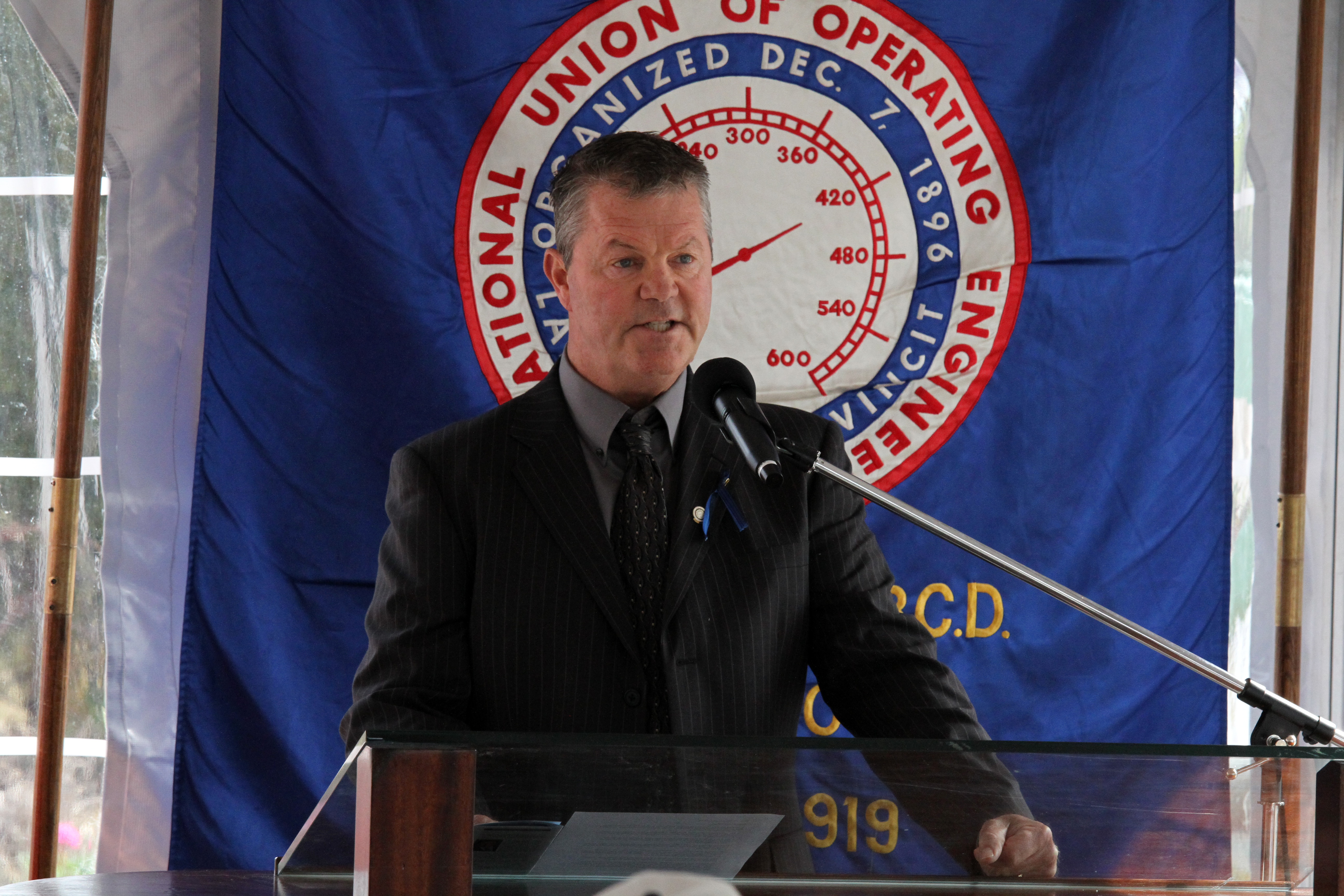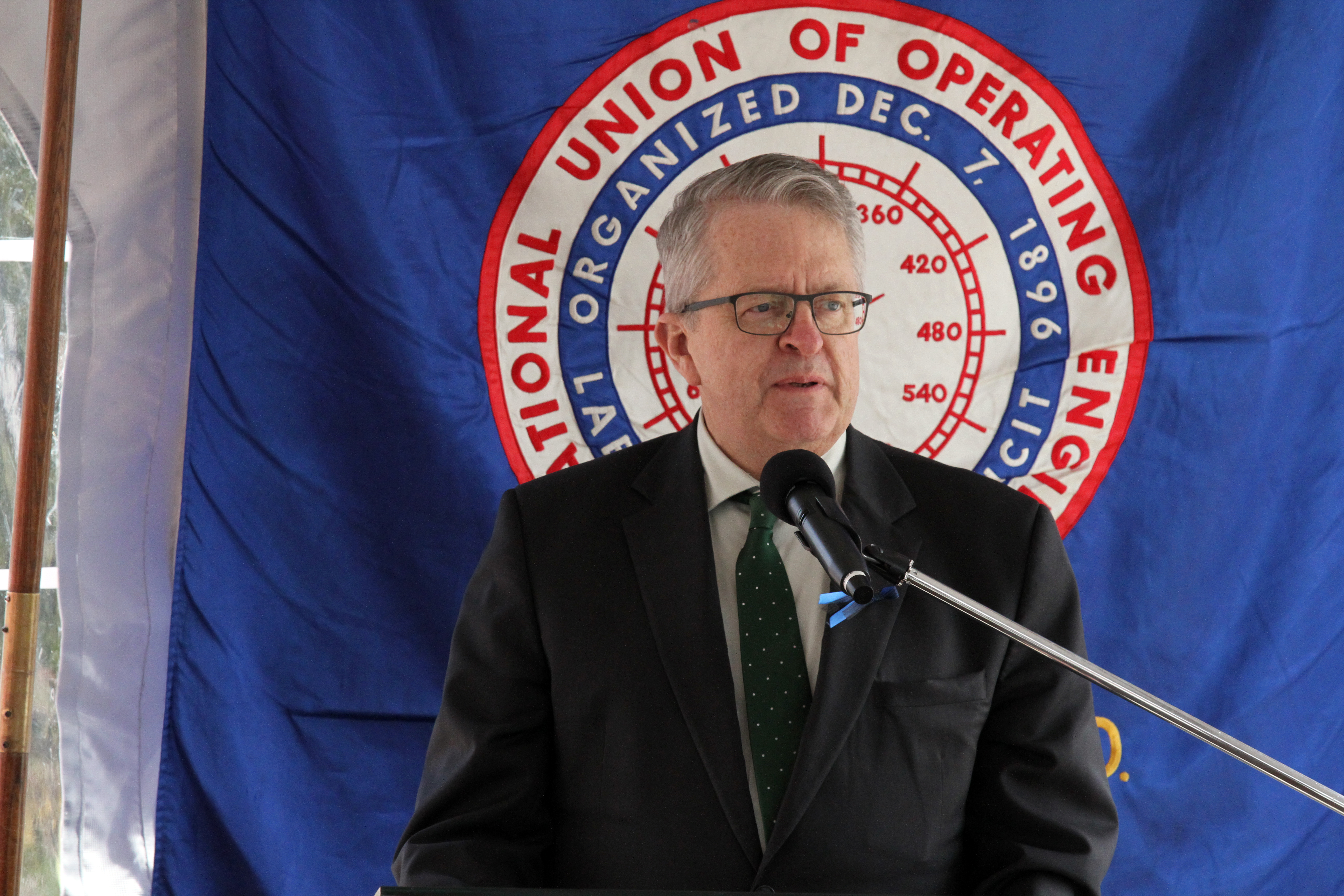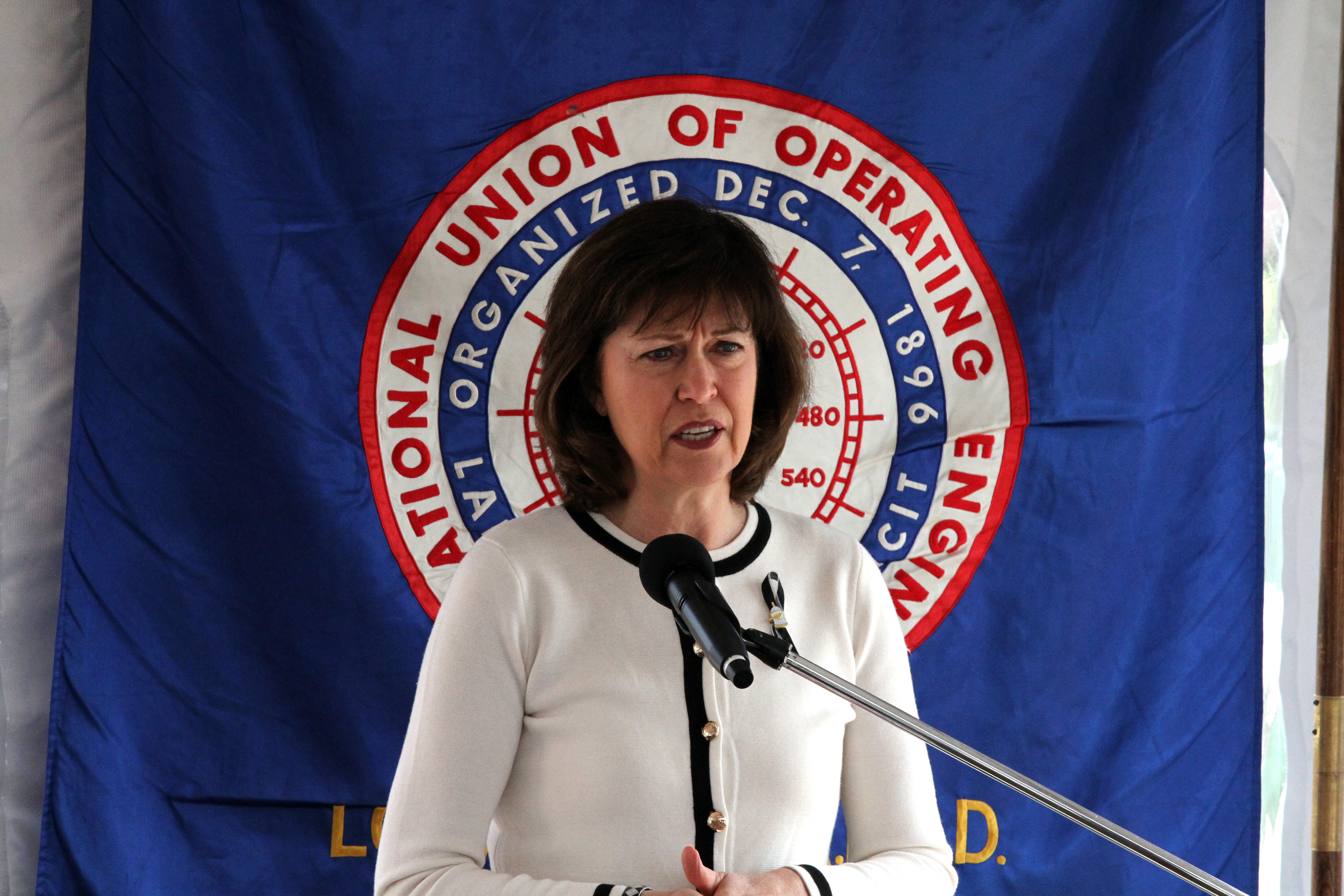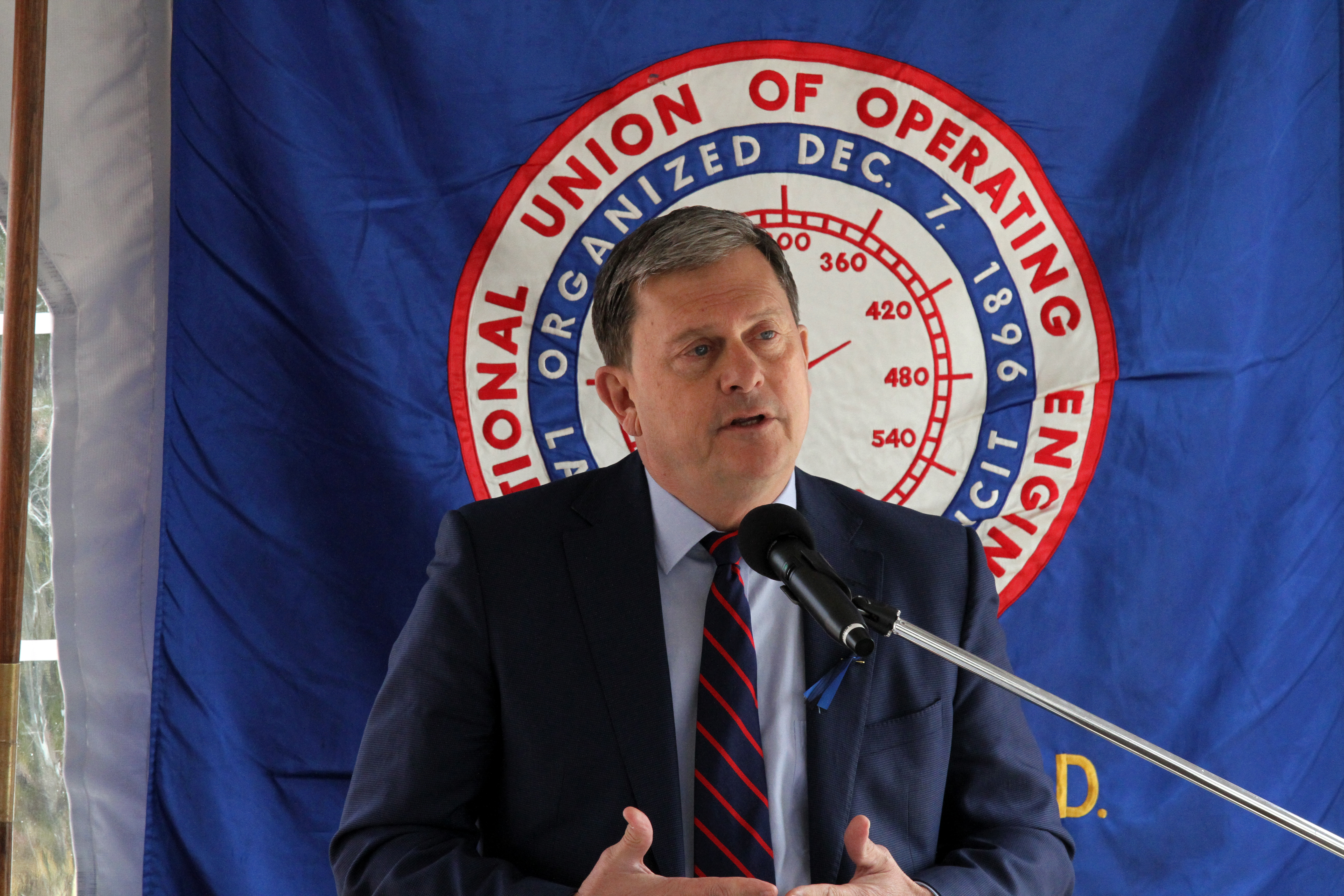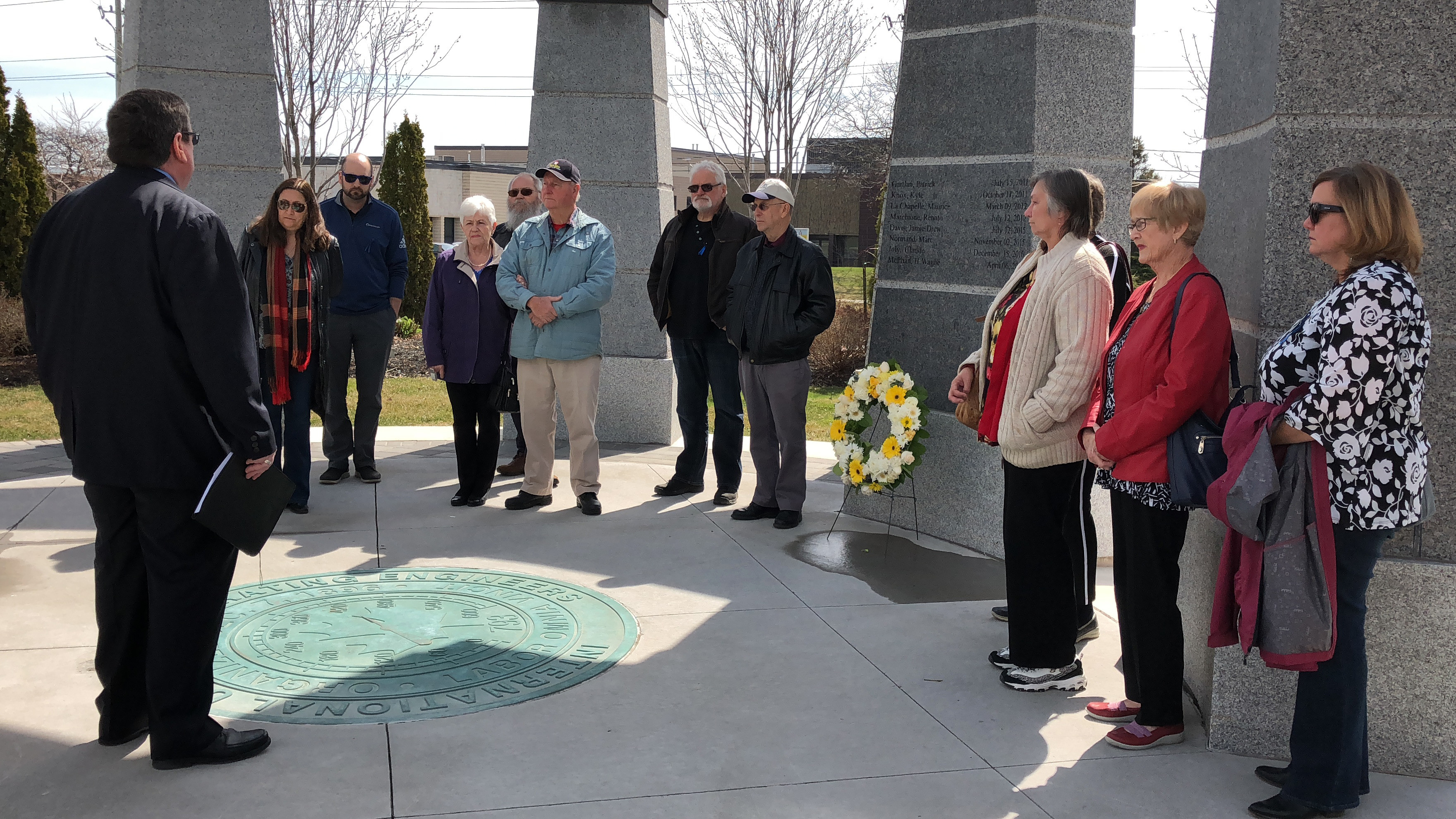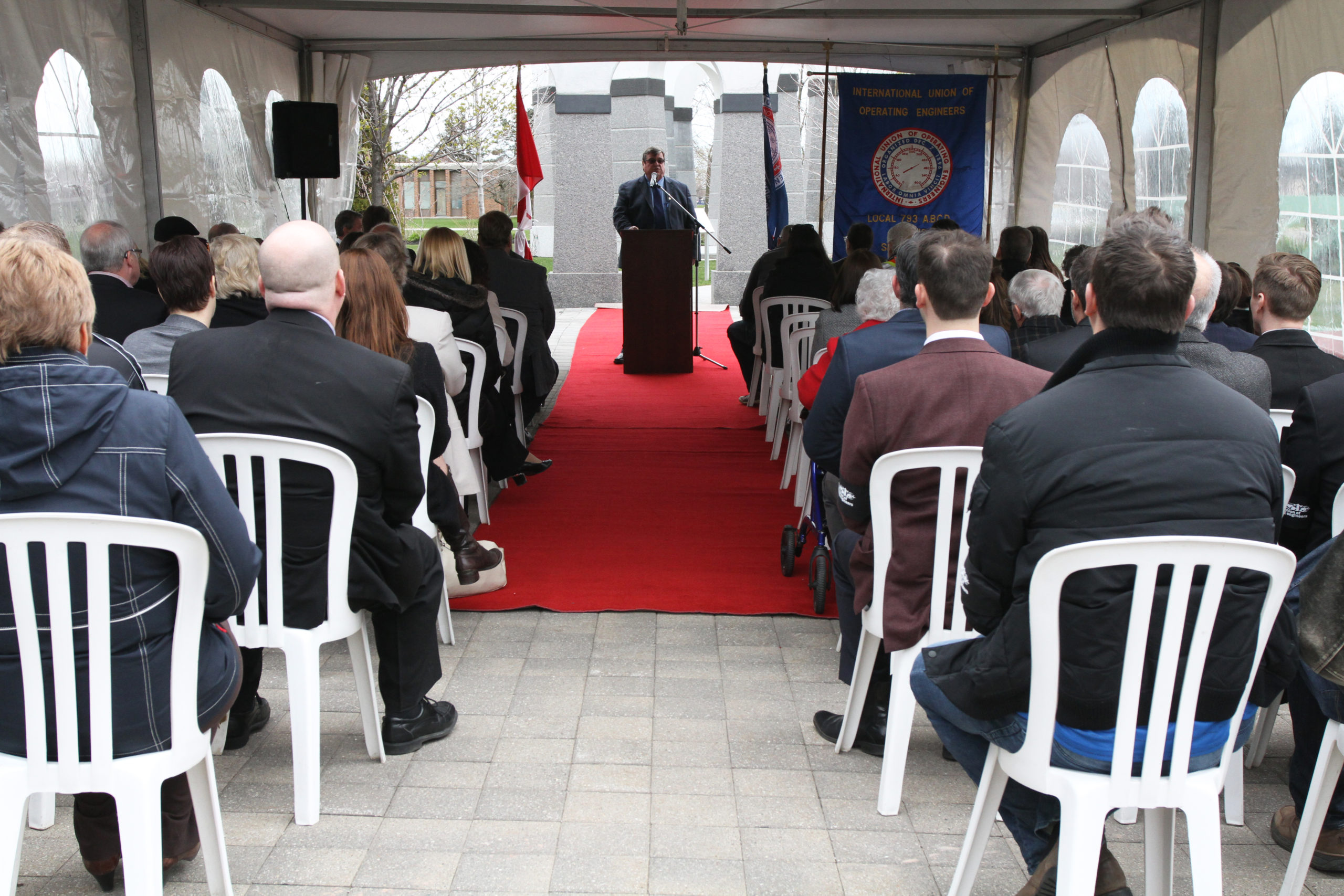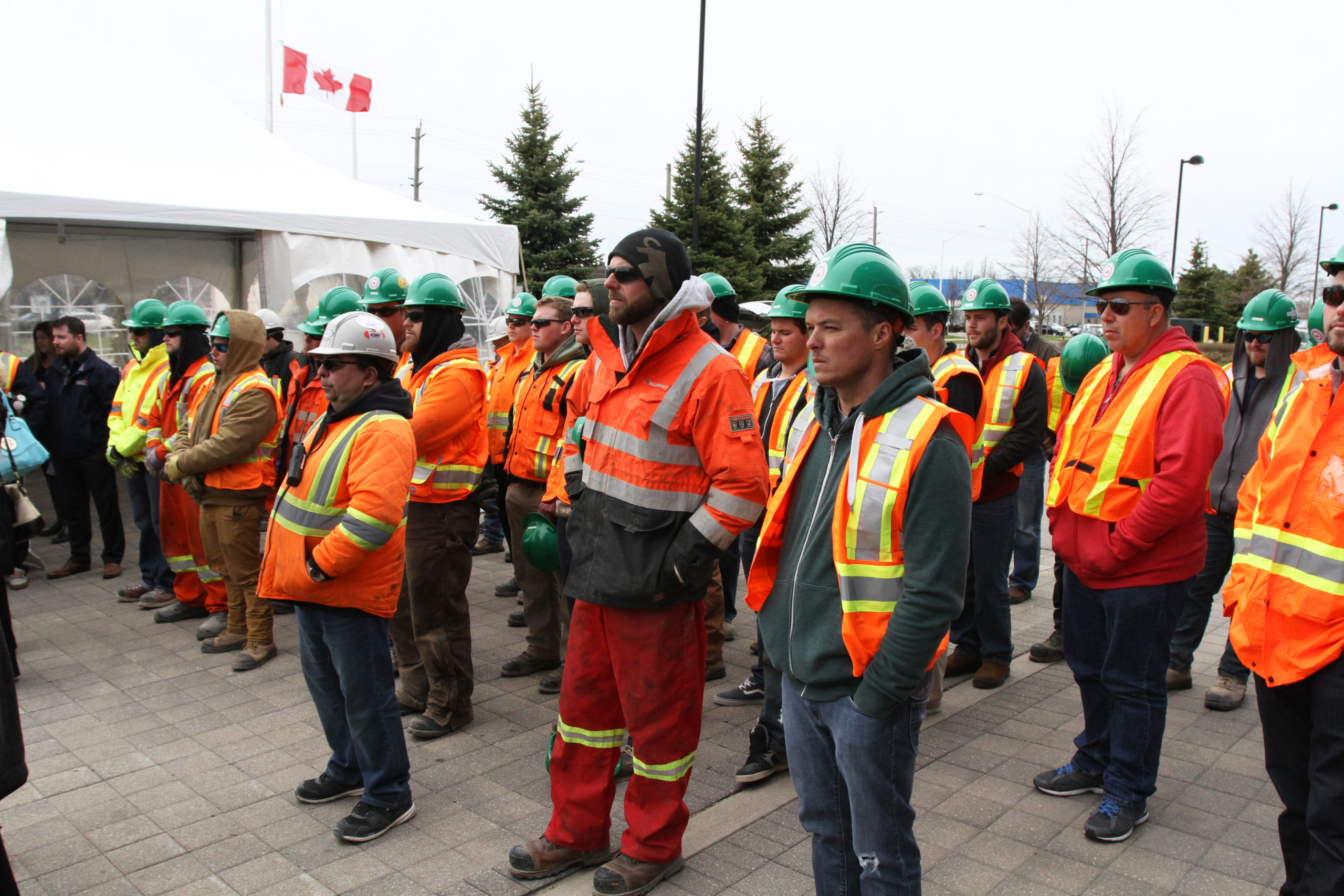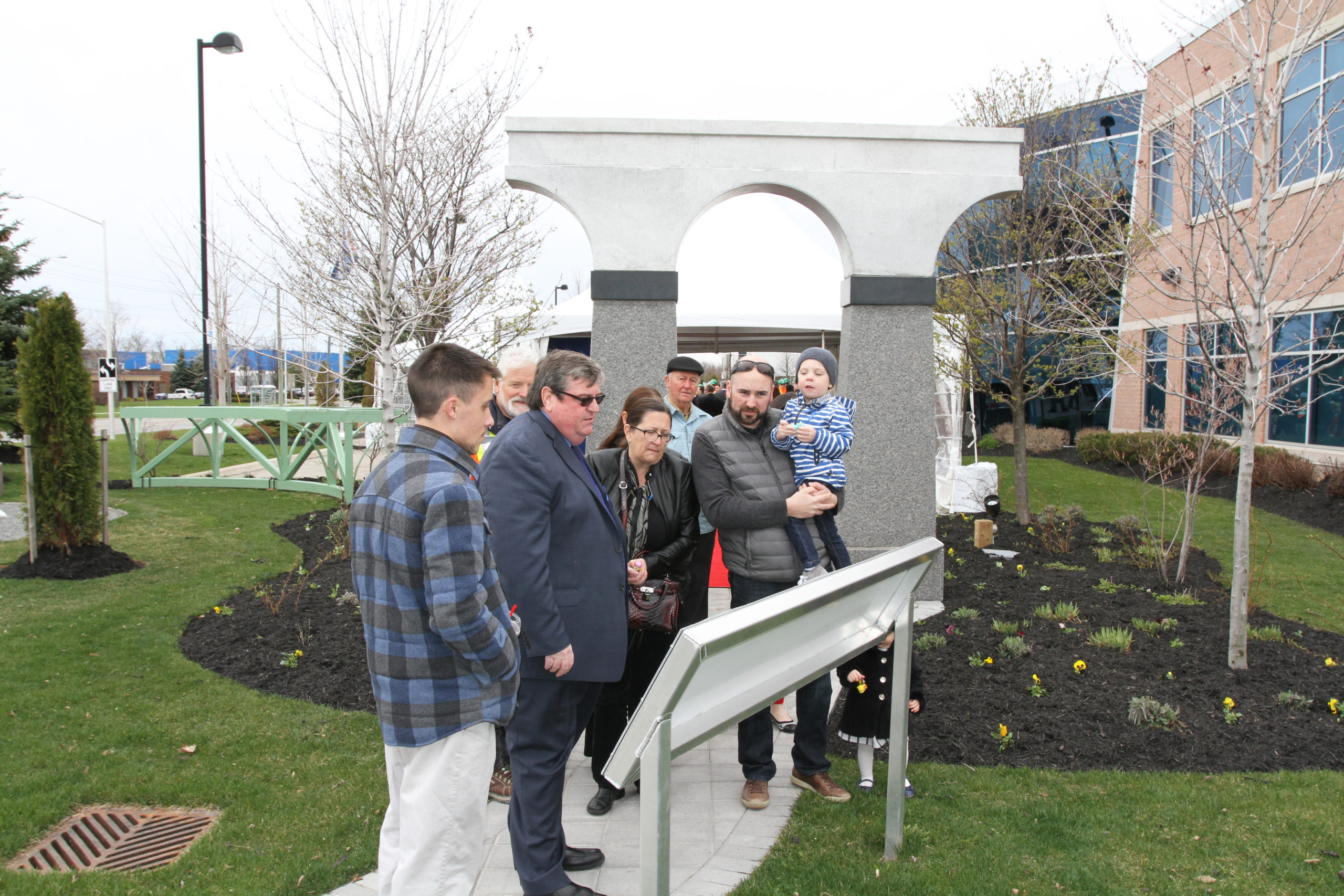Labour, governments and employers must do more to curb fatalities and injuries on construction sites and other workplaces, Local 793 business manager Mike Gallagher said in remarks at a Day of Mourning ceremony April 27 at the union’s head office in Oakville. “The trend this year for fatalities is absolutely going the wrong way,” he said, “and that means that we have to redouble our efforts, find out what the main cause is, what’s happening and make sure that we take actions to prevent these fatalities from happening.” About 100 […]
Labour, governments and employers must do more to curb fatalities and injuries on construction sites and other workplaces, Local 793 business manager Mike Gallagher said in remarks at a Day of Mourning ceremony April 27 at the union’s head office in Oakville.
“The trend this year for fatalities is absolutely going the wrong way,” he said, “and that means that we have to redouble our efforts, find out what the main cause is, what’s happening and make sure that we take actions to prevent these fatalities from happening.”
About 100 people, including many employers, apprentices and union staff, attended the morning, hour-long ceremony, held at a monument at head office that is dedicated to Local 793 operators who’ve been killed or injured on the job.
In the audience were a number of family members of Local 793 operators whose names are etched on the monument. One new name was engraved on the monument this year – that of 54-year-member Wayne McPhail who died from asbestosis on April 6, 2017 at 77. McPhail developed problems from asbestos on the clutches and brakes he worked on.
Gallagher said while efforts are being made to prevent accidents, the fatality statistics so far this year in construction are sobering.
“When we think we’re going in the right direction, we start to go in the wrong direction.”
There have been seven construction fatalities in Ontario so far this year, he said, up from two during the same period in 2017.
In 2017, he noted, 22 people were killed in construction site accidents in the province, up significantly from 14 in 2016, while 271 construction workers were injured, up from 182 in 2016.
According to the Workplace Safety and Insurance Board (WSIB), about 200 people are killed each year on the job in Ontario, which, Gallagher said, is “far, far too many.”
He said a large number of the construction fatalities are either from struck-by accidents or falls.
“You can fall just seven feet and end up in a fatality,” he said. “Some of these falls are from much greater heights and some of them are from lesser, but a fall is absolutely a major problem despite all the efforts that have been made for fall protection and everything else.
“It just seems not to be getting through because you can have fall protection gear on, but if you don’t tie off it isn’t worth anything really except decoration.”
Gallagher noted the Ontario government has launched an awareness program called Stand Down for Safety aimed at encouraging construction employers and workers to engage in toolbox-style talks at the start of each workday to ensure safety is a daily focus.
However, he said, more must be done, legislation needs to be tougher, and efforts to prevent fatalities from happening have to move quicker, as workers are still being killed.
Gallagher noted that several years ago two young girls were killed in a tragic accident in the Niagara area on a Take Our Kids to Work Day when the “Gator” utility vehicle they were riding in smashed into the bottom of a parked truck-trailer.
“If that doesn’t tell you there’s something wrong with how we view health and safety nothing will.”
He also spoke about a fatality involving Kyle Knox, a Local 793 apprentice who was killed Oct. 11, 2011 when a rotary drill rig collapsed at a construction site in Toronto. The operator of the drill rig was not licensed and only had 80 hours training.
Gallagher said Knox was a young man with a promising career and the accident likely would not have happened if a licensed, qualified operator had been running the rig.
“It boggles the mind why we would want to take shortcuts when we know the risk is so, so high.”
Gallagher told those at the ceremony that labour has been pushing for more penalties and bigger fines for employers who are criminally responsible for fatalities in their workplaces and on their sites since the Westray mine disaster, but the fact is it’s not happening.
“The law is there but the enforcement of that is not and very few employers have gone to jail. The other thing is that the fines, on average, are just under $100,000 across the country for a fatality and I say to you that that’s a pitifully low amount to value a human life when there’s been absolute cause of an employer ignoring health and safety.”
Gallagher said he believes that fines have to increase but governments also have to put more money into prevention.
“Everybody talks a good game in government and that probably happens in every province across the country where they talk the mantra, but they don’t necessarily follow through with what they’re saying. They’re fine-sounding words but they’re not taking action to prevent accidents and fatalities from happening.”
Gallagher said Ontario has a chief prevention officer but the problem is that everything moves too slowly when it comes to health and safety.
“We’re not moving fast enough on prevention to ensure that we do actually prevent the fatalities from happening.”
For example, Gallagher said, a study done by the Construction Safety Association of Ontario showed that compulsory certification of crane operators coupled with mandatory training reduced operator fatalities in Ontario by more than 80 per cent or higher, but crane licensing regulations across the country are less than Ontario’s standard.
As a result of harmonization efforts, he said, there is pressure on Ontario to lower its standards and reduce the amount of training hours required to become a crane operator.
Instead, he said, the tide should be reversed and compulsory certification should be made mandatory for every piece of heavy equipment.
“You should have compulsory certification and you should have mandatory training. Unbelievably, there is equipment out there on jobsites and various places where the operator doesn’t even need a driver’s licence to operate the equipment.”
Gallagher called on governments to ensure that all types of heavy equipment have certified and licensed, mandatory-trained and qualified operators.
He noted that after four and a half years the union was finally able to convince the province to make crane licensing mandatory for rotary drill rig operators.
“The issue was offshore contractors coming in here and putting less-qualified workers on the equipment, something we have to be absolutely vigilant on,” he said. “But why does it take four and a half years for us to do what we all know needs to be done?”
Gallagher also spoke about a mesothelioma-screening program at Princess Margaret Hospital in Toronto. The early detection program is a pilot project supported by Local 793 and other building trades. The program is designed to detect mesothelioma and lung cancer at an early stage.
He encouraged operators and apprentices to participate in the program. Members can call 416-340-5686 to get more information about the program.
Local 793 president Joe Redshaw, who emceed the ceremony, said fatality statistics are going in the wrong direction and he called on the Ministry of Labour (MOL) to conduct more enforcement blitzes to make sure workers are trained and using equipment properly.
He also called on the WSIB, Infrastructure Health and Safety Association and MOL to review statistics to find out if there’s a common cause for fatalities and determine if that’s due to lack of enforcement, jobsite inspections, training or complacency in the workplace.
“We need to look at those deeper and find out if we can find a cause and then we can focus on that type of training.”
Oakville Mayor Rob Burton said he’s proud that the Region of Halton, Town of Oakville, Oakville Hydro, the local hospital and housing corporation all agree that safety is their top priority.
“We pledge that we will return you and we will do everything in our power and deploy every resource at our command to make sure that you go home to your family and your loved ones in as good condition as you come to work in the morning. That is our reciprocal responsibility we have to the people who work for us.”
Oakville North-Burlington MP Pam Damoff expressed her condolences to families at the ceremony whose loved ones have died.
“No one should send someone off to work and not have them come home,” she said. “Everyone should expect to greet their loved ones exactly the same way that they left for work.”
Oakville MP John Oliver said in 2016 more than 900 Canadians died due to a workplace injury or illness and hundreds more were injured.
“The tragic loss of women and men every year is a reminder that there’s always more that we can be doing to improve workplace health and safety.”
Also at the event, Local 793 vice-president Joe Dowdall read a poem called Do You See Me? that was written by retiree Frank G. Davis of London. Following is the poem:
You will see me in the sunset’s glow
And in the early morning rise
And you will see me in the clouds that float
Across our lovely skies
You will hear me in the thunder
And in the winds that blow
You will see me in the sparkling frost
And on the new falling snow
You will feel me in the warm breeze
That blows every spring
You will hear me in the song
That nesting robins sing
You will feel me in the bark
As you touch a tree
And each leaf that falls
Forever more
Will be a part of me
[vsw id=”UcXLrfZ0ag4″ source=”youtube” width=”720″ height=”405″ autoplay=”no”]

